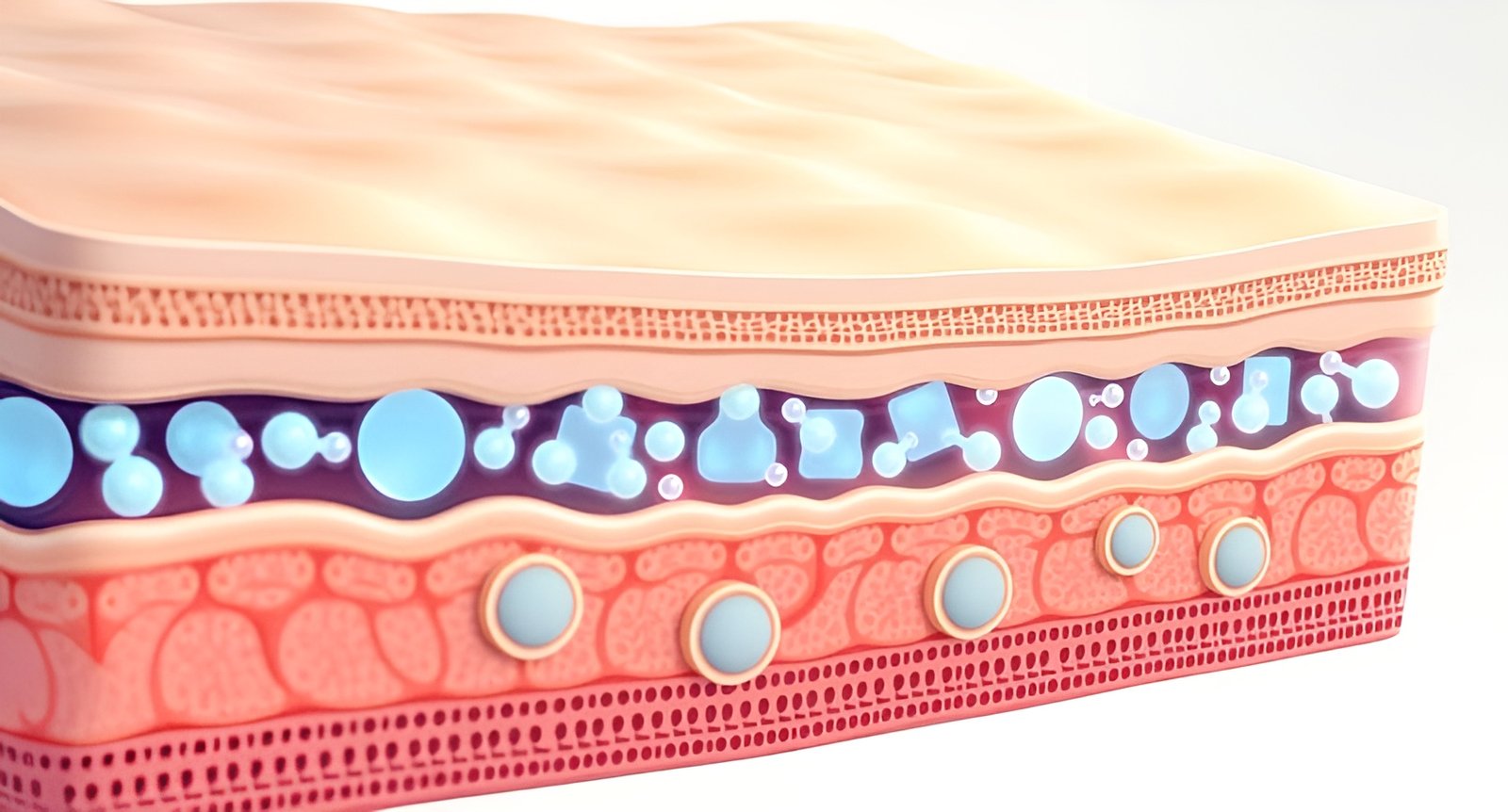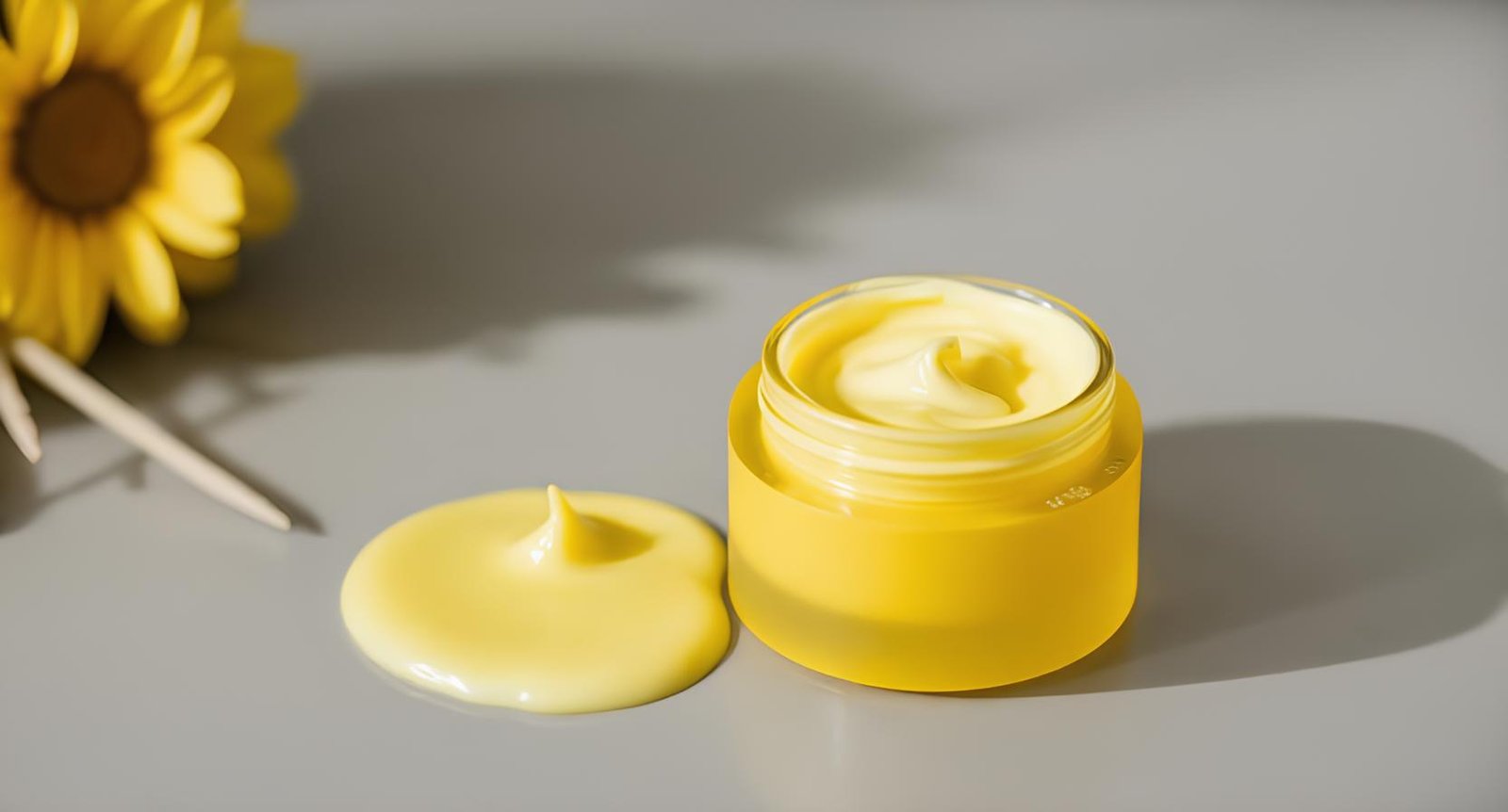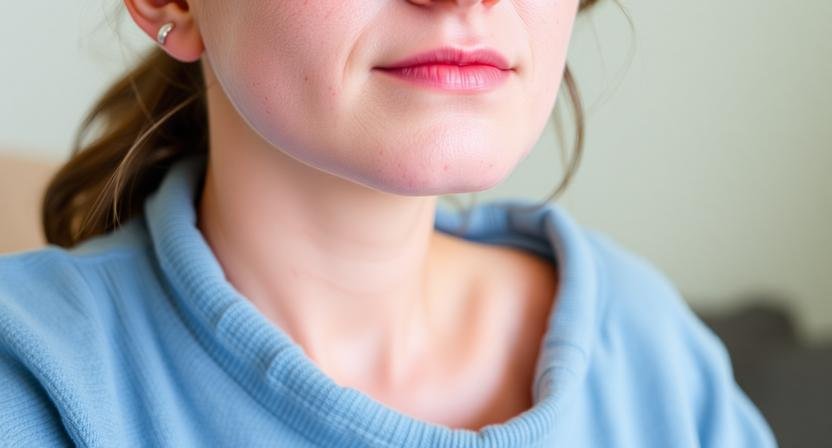Ceramides: What They Do & Why Barriers Need Them

If your face feels tight by noon, stings after a simple cleanse, or looks shiny and dry at the same time, your moisture barrier is asking for help. Ceramides are one of the fastest ways to answer. They are not trendy fluff. They are part of your skin’s own “mortar,” and without enough of them, water leaks out and irritants sneak in. Add them back, and skin feels calmer, looks smoother, and stays hydrated longer. This guide breaks down what ceramides are, how they work, and how to use them without overthinking it.
What Ceramides Are
Ceramides are waxy lipids your skin already makes. They live in the outer layer, the stratum corneum. Picture a brick wall. The bricks are dead skin cells. The mortar is a mix of ceramides, cholesterol, and fatty acids. That mortar keeps water in and keeps irritants, pollution, and microbes out. Ceramides make up the largest share of that mortar, more than any other lipid in the barrier.
You may see names like ceramide NP, AP, EOP, NS, and AS on labels. Those codes describe different shapes of the same family. Your skin uses a mix, not just one. Formulas that blend several ceramides often feel more “skin like” and support the barrier better over time.
Why Barriers Need Ceramides
When the mortar is thin or cracked, water escapes. Dermatologists call that transepidermal water loss. The skin gets tight, dull, and reactive. Products sting. Flakes appear. Oil production may even rise to coat the surface, which is why you can look shiny and feel dry at once. Replace the missing mortar and the wall stabilizes. That is what ceramides do. They fill gaps, slow water loss, and help other barrier lipids line up in strong layers.
A healthy barrier does three big jobs. It keeps moisture inside, it shields from irritants, and it helps repair small daily damage. Ceramides support all three. They are not a quick glow trick. They are quiet structure.
How Ceramides Compare To Hyaluronic Acid
Hyaluronic acid is a humectant. It pulls water toward the top layers. Ceramides are lipids. They help seal that water in. One is a sponge, the other is a seal. Most faces do best with both. A hydrating serum pulls water in. A ceramide moisturizer keeps it from escaping. If you use only humectants without a seal, you may feel tight again in an hour, especially in dry air.

Who Needs Ceramides
Short answer, everyone. Long answer, some people need them more often. If you use acids, retinoids, benzoyl peroxide, or wash more than twice a day, you are using up mortar faster. If you live in a cold or windy climate, use indoor heating or constant AC, or fly often, your barrier dries out faster. If you have eczema, rosacea, or reactive skin, ceramides can make routines possible again.
Oily or acne prone skin also benefits. Oil does not equal strong barrier. Many oily faces are dehydrated because they strip too hard. Ceramides calm that cycle and reduce the rebound shine that follows harsh cleansers.
Signs You Are Low On Ceramides
Your face feels tight ten minutes after washing. A basic moisturizer stings. Makeup catches on tiny flakes around the mouth and nose. You get random red patches from weather or hot water. You look glossy but feel dry. Your go-to actives suddenly feel too strong. These are all “help, we are missing mortar” signals.
Where To Find Ceramides In Products
Ceramides show up in cleansers, toners, serums, creams, eye creams, and even sunscreens. The most useful step for many people is the moisturizer step, because it stays on the skin longer. Cleansers with ceramides can be helpful too, as long as the formula is gentle and pH balanced. Serums with ceramides are great for thin layering under lighter lotions or for oily skin that fears heavy creams.
On labels, look for “ceramide NP” or similar, plus cholesterol and fatty acids. You may also see supporting players like phytosphingosine (a ceramide building block). A classic trio is ceramides, cholesterol, and free fatty acids in a ratio similar to healthy skin.
How To Layer Ceramides
Keep it simple. After cleansing, apply a hydrating step like glycerin or hyaluronic acid while your skin is still slightly damp. Follow with a ceramide-rich moisturizer to seal. In the morning, sunscreen goes last. At night, if you use an active like a retinoid or an AHA, you can “sandwich” it between two thin layers of a ceramide cream for comfort.
If you are very reactive, try a “ceramide reset.” For one to two weeks, use only a gentle cleanser, a ceramide moisturizer, and sunscreen. Then add actives back one at a time.
Do Ceramides Clog Pores
Pure ceramides do not clog pores. They are part of your barrier, not heavy plant oils. What can clog pores is an overall formula that is too occlusive for your skin in warm weather or when layered thick. If you are breakout prone, pick gel creams or light lotions with ceramides. If you prefer richer textures, use a thin layer and focus on drier zones at night.
Ceramides With Retinoids, Acids, And Acne Treatments
This is one of the best pairings in skincare. Retinoids help with texture, acne, and fine lines, but they can dry and irritate. Acids smooth but can thin the surface if overused. Benzoyl peroxide fights acne but can be rough. Ceramides cushion all of them. They lower the “cost” your barrier pays for results.
A simple map:
Retinoid nights, moisturizer, retinoid, moisturizer
Acid nights, small amount of acid on dry skin, wait a few minutes, ceramide cream
Benzoyl peroxide nights, thin BP layer on breakout zones only, then ceramide cream on the whole face
You do not need to feel sting to make progress. Calm progress lasts longer.
Ceramides And Eczema Or Rosacea
Eczema and rosacea are complex and need medical care when they flare, but daily ceramide use can help extend calm periods. The goal is steady, boring routine. Gentle cleanse, ceramide moisturizer, sunscreen. Actives only as directed and introduced slowly. Avoid very hot water and rough towels. Ceramides here act like daily repairs on a road that gets heavy traffic.

How Much To Use And How Often
Think thin coats. A pea to almond size amount for the face and neck is plenty, twice a day for dry or sensitive faces, once a day for oily faces or warm climates. Increase at night or in winter. If skin still feels tight after fifteen minutes, add a second small layer or look for a formula with more cholesterol and fatty acids alongside the ceramides.
How Fast They Work
Some comfort is immediate because the cream sits on the surface and limits water loss at once. Visible changes, like fewer flakes or less redness, show in one to two weeks for many people. Deeper stability, where actives stop stinging and your oil production feels steadier, may take three to six weeks. Your skin needs time to rebuild the layered lipid structure.
How To Choose A Ceramide Product
Match texture to skin mood. Oily or combo, choose a gel cream with ceramides. Dry or mature, pick a mid-weight cream or a rich night cream when the air is dry. Sensitive or eczema prone, choose fragrance-free with a short ingredient list and avoid strong acids in the same formula.
Scan the first third of the ingredient list. If you see ceramides plus cholesterol and fatty acids there, that is a good sign. If ceramides sit at the very end, the formula may still help, but it is likely relying more on emollients than on a true barrier blend. Neither is wrong, but it sets your expectations.
Cleansers With Ceramides
A ceramide cleanser should be gentle and low foam. It will not “treat” the skin the way a leave-on does, but it can stop the daily strip-and-repair cycle. If you feel tight after rinsing, switch cleansers before you switch creams. A calm sink habit makes every other step easier.
Sunscreens With Ceramides
If sunscreen always stings, a ceramide-containing SPF can reduce that chance and make daily wear easier. Choose a light fluid for oily skin or a lotion for normal to dry skin. Let it set for a minute before makeup. Protecting a healing barrier is half the job of barrier repair.
Ceramide Serums And Boosters
Serums are useful when you want the benefits without weight. Look for milky emulsions or ampoules that list ceramides and supporting lipids high on the list. Layer them under a basic moisturizer you already love. Serums also let you “spike” a lighter gel cream in summer or on oily days.
Myths About Ceramides
“Ceramides are just heavy creams.” Not true. Ceramides are ingredients, not a texture. You can find them in gels and light lotions.
“Ceramides do the same thing as hyaluronic acid.” They do different jobs. Hyaluronic pulls water in. Ceramides help keep it in.
“Oily skin does not need ceramides.” Oily skin often needs them more because of frequent washing and actives. Balanced lipids lower rebound shine.
“If a cream has shea butter or oils, it must be better for the barrier.” Some oils soften well, but your skin’s mortar is ceramides, cholesterol, and fatty acids. Emollient oils are nice, but they are not the same as the lipid mix your barrier prefers.
Pairing Ceramides With Lifestyle
Little habits help. Use lukewarm water, not hot. Pat dry, do not scrub. Run a humidifier in winter. After flights or long days in AC, add an extra thin layer at night. If you shave your face, use a ceramide lotion after to reduce sting and redness. If you love long showers, finish with your ceramide moisturizer within a few minutes while the skin is still slightly damp.

A Simple Barrier-First Routine
Morning
Gentle cleanse or a rinse if your skin feels fine, hydrating serum, ceramide moisturizer, sunscreen.
If you wear makeup, let layers set for a minute between steps. A calm, set base pills less and wears longer.
Night
Gentle cleanse, active on its schedule, ceramide moisturizer. On tender nights, sandwich the active between two thin layers of the moisturizer. Build in one “rest night” each week with cleanser and ceramide cream only.
Ceramides For Body And Hands
Your face is not the only area that loves mortar. Hands, chest, and legs lose water fast in winter and after frequent washing. A ceramide lotion for body keeps skin from itching and lowers the chance you will scratch or pick at dry patches. Apply after showers while still slightly damp. Keep a travel tube in your bag for post-sanitizer hands.
Can You Overdo Ceramides
Too much of a good thing usually shows up as a coated feel or makeup sliding, not as irritation. If your face feels heavy, use a smaller amount, switch to a lighter texture, or reserve richer formulas for night. You can also apply a light film to the T zone and a fuller coat to the cheeks and neck. Adjust by zone and season.
When Ceramides Are Not Enough
If redness comes with swelling, pustules, or burning that lasts, see a dermatologist. Conditions like eczema, rosacea, perioral dermatitis, or contact allergy need medical care. Ceramides can support the plan but they are not the plan. If your skin reacts to nearly everything, a patch test routine and a short list of products will help you find what your face can tolerate.
The Bottom Line
Ceramides are not a trend. They are the bricks-and-mortar language of your skin barrier. When the barrier is steady, everything else gets easier. Hydration lasts, redness fades, makeup sits smoother, and actives work with fewer side trips into irritation. Build your routine around that truth. Cleanse gently. Add water. Seal with ceramides. Protect with sunscreen. Use actives at a pace your barrier can handle. Skin is simple when you give it what it knows. Ceramides are what it knows.